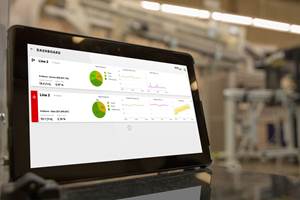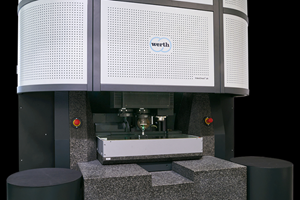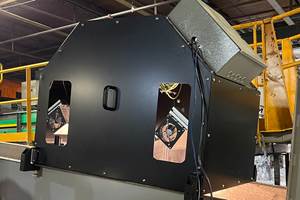Automated Assembly Integrates Leak Testing For Lower Cost, Higher Output
Integration of leak testing into a fully automated assembly system proved to be a boon for San Diego-based Gen-Probe, Inc., a pioneer in genetic diagnostics for disease testing.
Integration of leak testing into a fully automated assembly system proved to be a boon for San Diego-based Gen-Probe, Inc., a pioneer in genetic diagnostics for disease testing. The company improved output of its penetrable sealed cap for specimen tubes and reduced costs for manufacturing space and labor.
It is becoming more common for automated assembly to include some degree of integrated leak testing, says Jacques Hoffmann, president and owner of InterTech Development Co. (IDC), which supplied the leak tester to Gen-Probe. "This trend has been growing as more plastics manufacturers have increased automation. About 90% of our business is in testing of medical devices, such as valves for anesthesia and assisted-breathing devices, as well as in automotive intake manifolds, valves, and engine covers. The other 10% is for testing aerosol valves for consumer products, where very quick response is required, as they run 100 parts/min."
Bassam Poulath, president of Gen-Probe's systems integrator, Product Handling, Engineering and Development (PhedCorp) of Temecula, Calif., also sees increased interest in integrating leak testing with assembly, particularly from molders of pressurized pumps or self-actuated pump dispensing heads, ranging from household cleaners to cosmetics. Pharmaceutical syringes and medical devices also exhibit this trend. "Typically for such applications, leak testing was done off-line once every 100 or so parts. With this type of integrated assembly, one can test every part at up to 100 units/min. However, when a perfect seal is required, test speeds are lower. For example, in a critical application like Gen Probe's, the fastest leak testing is 20 parts/min, or every 3 sec, because they must be very precise."
Gen-Probe's challenge
When Gen-Probe designed a new cap for a specimen tube to be used to hold samples for a new super-sensitive genetic detection method, the paramount requirement was that the cap be penetrable to allow assay samples to be withdrawn from the tube, but it must still provide a secure seal that prevents even the tiniest amount of aerosol contamination to escape the tube and potentially contaminate other genetic tests being performed in the same lab.
Gen-Probe then devised the new penetrable cap molded of white polypropylene. It starts out as an open-ended cylinder about 5/8-in. diam. and 11/16 in. long, with a 1/16-in.-wide flange around the inside circumference at mid-length. This internal flange provides the seat for the internal membrane seal, a disk of aluminum foil laminated onto PET/PE film. The film reinforces the foil's vapor barrier and provides a surface that will heat-bond to the cap's flange by induction welding under pressure.
During cap assembly, the inner seal is mounted first, then a strip of filter pile material is coiled and inserted above the seal, and a second foil-disk seal is applied across the cap's upper end to lock the filter in place.
The cap remains on the tube but allows assay samples to be drawn by inserting a pipette through the seals and filter. The snug fit between the seals, filter and pipette prevents any aerosol emission, and the resilience of the filter pile automatically recloses the hole left after the pipette is withdrawn.
The new design was successful—almost too successful. Says Dale Camper, Gen-Probe's director of manufacturing engineering–operations technical support, "Early users immediately began urging us to use the same type of specimen tube and cap for the other assay kits. Projections suggest we'd be making 50% more of these within a year, and probably averaging annual gains of at least 20% for a while after that. So now we needed a way to produce much higher volumes yet test each one for seal integrity."
All caps were made essentially by hand in initial production of the new assay tubes. After the inner seal disk was peeled off a Mylar backing and welded in, each cap was leak-tested to verify the sealing integrity of both the foil disk and its perimeter weld. The caps were taken off-line manually and loaded into a 10-up fixture, which applied 10-psi air pressure against the underside of the middle seal. Pressurizing and stabilizing took 2.5 sec, while leak testing took another 2 sec. Accepted caps—those that allowed a pressure loss no greater than 0.007 psig—were taken back to the assembly line for manual addition of the filter pile and upper seal.
The four manual assembly stations with five operators could produce no more than 15,000 caps a week. The 4.5-sec leak test, with additional time for manual transfer to and from the assembly line, was far too slow, yielding 20 caps/min at best. Says Camper. "We would have needed a lot more manufacturing space and higher labor costs to keep up with demand."
Integrated automation
Gen-Probe asked PhedCorp for a fully automated solution that would combine assembly and testing. That challenge was offered to three leak-testing system suppliers, with highest priority set on cutting test time to 1.5 sec and having the entire system up and running within six weeks. IDC was most successful in meeting these criteria.
PhedCorp designed an in-line assembly and testing machine that would receive cap blanks from a centrifugal bowl feeder, load them onto conveyor pallets in pairs, threaded-end-down, then advance the pallets through a se quence of stations including a leak-testing station positioned immediately after induction welding.
To keep machine design as simple as possible, all assembly and testing functions would be performed above the pallets. IDC proposed replacing the former pressure test—which would have to be performed from below the pallets—with a -10 psig vacuum test performed from above. This approach would also make it easier to meet the 1.5-sec testing requirement because a vacuum inherently requires less stabilizing and it prompts quicker fixture-to-part sealing.
Faster cycle time was furthered by IDC through customizing its M-1045 leak detector, a computerized pressure-decay instrument, to measure low-level vacuum rise in small-volume parts. When the test fixture descends and seals against the top of the cap, it encloses a test cavity of slightly less than 0.5 cc, from which the M-1045 draws its vacuum. Leakage would be revealed by a rise (weakening) of the vacuum.
To provide a volumetric leak-rate measurement traceable to an industry standard that accounts for test-part volume, the M-1045 converts its vacuum-rise measurement into sccm (standard cc/min) and reports that value numerically on its front display panel. Gen-Probe's acceptance limit of 0.007 psig, programmed into the M-1045 via the front panel keypad, converts to 0.343 sccm. Besides continuously displaying real-time test vacuum and leak-rate values, indicators on the front panel show amber lights for test in progress, green for acceptance, and red for rejection. Through its bidirectional RS232C interface, the instrument responds to and shares its information with the assembly machine's PLC.
Two M-1045 instruments mounted side by side simultaneously test two caps, letting accepted caps proceed to completion. The M-1045 electronically "tags" caps that fail to inhibit further assembly, avoiding waste of the filter and second seal that otherwise would be added downstream. Filter pile and top seal are inspected by machine vision for proper placement and are similarly "tagged" to guide further machine activity. At the end of the line, separate accept and reject chutes arc down over the passing pallets. Based on electronic "tagging" from the leak tester and inspection system, puffs of air from below blow each cap into the appropriate chute for collection in separate bins.
Says Camper, "We have had instances where a leak-test reject was attributable to wear on the fixture seal rather than a leaking cap, and we were able to catch it very early due to the IDC instrument's seal-check feature, which detects slightest change in seal integrity. This is a troubleshooting device or special test jig, that tests for leak integrity and for which we have a calibration check at specified intervals."
PhedCorp incorporated IDC's hand-held CalMaster calibration instrument into the machine by mounting it behind a swing-out panel adjacent to the M-1045 units. Says Poulath, "Although IDC recommends recalibrating once a day, we found the leak testers stable enough that weekly recalibration is generally sufficient."
The first integrated system has been running a double shift and making 40 parts/min. A second machine was started up last month with a third machine currently being built. "Our new system produces more than 175,000 caps per week—almost 12 times more than before—with only two operators, which hints at the substantial cost savings involved. It also greatly reduces the time cost of controlling waste because with the prior 10-up testing, if any cap failed, all 10 would need retesting in order to save the ones that didn't. Now only the bad ones are tossed," sums up Camper.
Related Content
How Inline Vision Inspection Can Minimize Scrap in Molding
Once viewed by injection and blow molders as a necessary evil, machine vision technology today can continuously monitor and improve production while reducing costs.
Read MoreExact Metrology Now Distributor of HandsOnMetrology.com
The new digital format was set up to share the benefits of 3D metrology with a global community.
Read MoreUpgraded CT Scanning and Multi-Sensor Coordinate Measuring Machines
Werth’s TomoScope S Plus 240 systems boast more than double the measuring volume as their predecessor with almost the same size.
Read MoreMetaspectral to Advance Vision Technology for Recycling
Company received further funding from British Columbia’s CleanBC Plastics Action Fund
Read MoreRead Next
Recycling Partners Collaborate to Eliminate Production Scrap Waste at NPE2024
A collaboration between show organizer PLASTICS, recycler CPR and size reduction experts WEIMA and Conair will seek to recover and recycle 100% of the parts produced at the show.
Read MoreBeyond Prototypes: 8 Ways the Plastics Industry Is Using 3D Printing
Plastics processors are finding applications for 3D printing around the plant and across the supply chain. Here are 8 examples to look for at NPE2024.
Read More


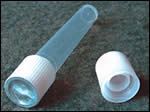
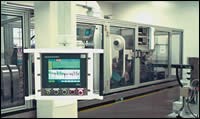
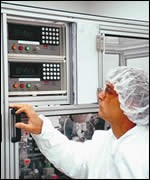














 (2).jpg;maxWidth=300;quality=90)




